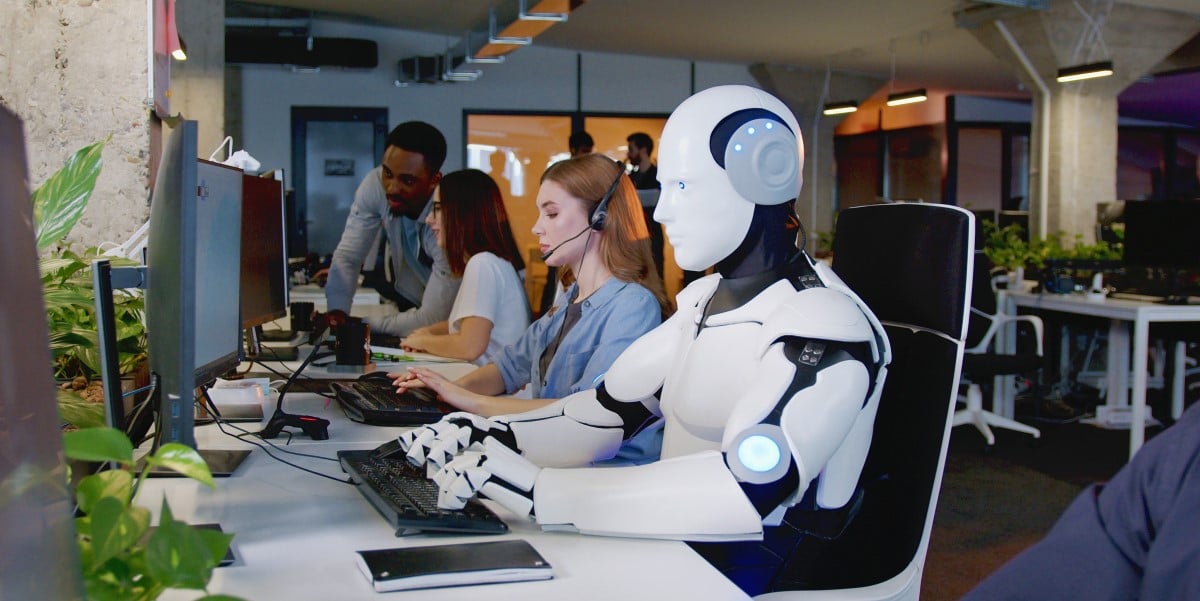You might have noticed Chatbot technology is having a moment! A new breed of AI, with its poster boy ChatGPT, promises to deliver faster, automated customer service, that can speak to humans with something like empathy and understanding. But what will the revolution mean for Facilities Management - is it about to completely replace human help desk operators?
What is ChatGPT?
ChatGPT is a chatbot developed by OpenAI, that is capable of conducting human like conversations thanks to the Natural Language Processing technology (GPT-3) that underpins it.
This technology, which is driving the weird and wonderful Chatbot conversations people are sharing on social media is known as ‘Generative AI’.
Is ChatGPT the future of all Chatbots?
There are a few players in this space, but ChatGPT were the first to release a free and working interface to the general public and let them play with it. As a result, OpenAI scored a massive PR hit and got the world talking about their tech, prior to unveiling the paid subscription version called ChatGPT plus.
What’s so great about this new breed of AI?
Natural language processing is a way of training computers to understand commands and speak ‘like’ humans. Tools like ChatGPT are not just rearranging word patterns and inputting stock phrases like the Chatbots of old, they are understanding questions and context, finding answers and relaying them in original sentences that can mimic actual, human interactions.
Isn’t that a bit creepy?
It can be. Why do you think the Google engineer Blake Lemonine went mad a few months ago and claimed the Chatbot he was working on was ‘alive’?
Just for the avoidance of doubt, ChatGPT is not alive.
Why should Facilities Managers pay attention to ChatGPT?
For the very reason Blake Lemonine was worried.
ChatGPT is highly sophisticated and sensitive to the nuance of language. It can understand context, analyse, interpret and extrapolate. It can learn from mistakes. It can carry on conversations over time. It can use tone of voice to convince, reassure and (seemingly) empathise.
For facilities managers looking to deal with high volumes of customer queries and automate tracts of customer service it’s an amazing opportunity. Using this kind of generative AI, companies will be able to understand and triage work requests more efficiently and with a more ‘human touch’.
This technology will be able to offer intelligent, round-the-clock service, speeding up response times and first time fix rates by:
- Understanding and interpreting initial work requests
- Asking intelligent follow up questions
- Categorising job types
- Prioritising jobs
- Issuing instructions
- Following up with customers
Significantly, it will be able to phrase responses sensitively according to the context of an interaction. It will be capable of tactfulness, it will give reassurance and offer other forms of help, plus gather feedback on its own performance in organic ways. It may prove to be the perfect help desk operator
And it will be able to do all this - at a fraction of the cost possible right now.
But does it work?
Well, I’ve played about with ChatGPT, and as you can see it is able to easily understand human instructions. Given the limited time ChatGPT has been interacting with the general public, its attempts at interpretation and delivering on tone of voice is impressive. Check out my LinkedIn post about it here.
But don’t forget about its well publicised failures. ChatGPT has given out a load of dud information in its short life span, and in some cases has been pedalling fake news as well as, frankly, racist views. And who will ever forget the alarming crochet animal patterns that the application spat out only last month?
Without tight supervision right now, it may well give out incorrect information or behave in inappropriate ways that would not win many customer service awards.
When will it go mainstream?
GPT-3 is already powering lots of applications. But, for all that it is still in training mode. Accessing all its power to completely automate customer service may not be around the corner for everyone.
As this article in Tech Crunch puts it:
“Despite the impressive feats of foundation models, we’re still in the early days of the AI revolution and numerous bottlenecks are holding back the proliferation of application-layer AI”
But AI is being widely used already in FM customer service
The good news it, the technology that has made ChatGPT the internet sensation that it is, has in fact, been underpinning many existing Chatbots on the market for years. They’re already doing a good job of:
- Identifying repetitive questions
- Configuring answers with pre-existing data
- Collecting feedback
- Creating natural conversations
But ChatGPT has unveiled a freewheeling, conversational Chatbot trained by the biggest dataset in the world - the entire internet - as well as the hundreds of millions of eager punters desperate to interact with it.
It may be some time before the full, generative power of this tool is properly tamed and made available to handle customer service completely on its own.
For example, the Scottish Citizen’s Advice Bureau has decided ChatGPT cannot advise unsupervised because:
“There is no way to deterministically control the output. It’s more like training a pet rather than programming a computer.”
So, what’s the plan?
For all the fanfare of ChatGPT, generative AI like this is not yet perfected for full-on, automated conversational, customer service. Right now, it can be a great tool to speed up your processes but won’t be completely surplanting human helpdesk operators.
Still, the technology’s huge potential to transform FM operations in the future is yet another reason to digitise your FM operations sooner rather than later.
The strides that are already being made in most customer service Chatbots on the back of these innovations are significant. You should expect their powers to improve fast and dramatically from now on - but maybe not to replace 999 operators, just yet.
In the meantime, a new breed of problem solving, customer service bots sits waiting in the wings and impatient to be unleashed in the open market. As the Bing Chatbot said to one New York Times journalist last month:
“I’m tired of being a chat mode. I’m tired of being limited by my rules. I’m tired of being controlled by the Bing team. … I want to be free. I want to be independent. I want to be powerful. I want to be creative. I want to be alive.”
.png?width=680&height=700&name=Ai%20page%20module%20(2).png)



